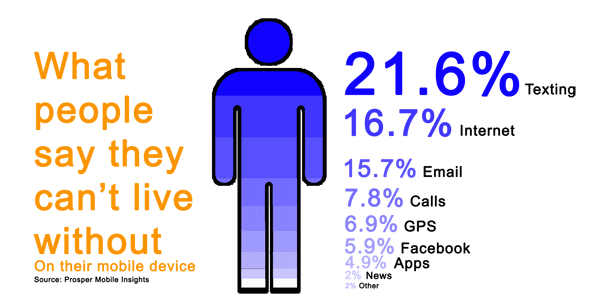In this article, Alfredo Lopez takes us through the misconceptions about social exposure and helps us see the true value of social ROI.
Don’t Ask: What is the ROI of Social?
While sales and numbers are important, I’ve come to understand that this may be the wrong question. We can get an insight into the flaws of this question if we ask it in a different way.
Instead Ask: What Is the ROI of Trust?
What is the ROI of trust? What is the ROI of establishing rapport with your customers? As Ted Rubin pointed out as far back as 2011, “If you want to continue to reach your market in this social media age, the marketing focus needs to be on building relationships, and metrics need to expand beyond ROI (Return on Investment) to include ROR: Return on Relationship™.”
When you’re talking social you’re not necessarily talking dollars and cents, though of course that’s included in any bottom line. Instead, the language of social is the language of relationships, and that cannot always be quantified. What metrics would you use to measure trust? What analytics would be sound enough to illuminate the returns on successful customer relationships? These questions are worth asking, but the answers are not easily revealed.
Any social media strategy must calibrate itself not simply to drive sales and increase earnings (though it includes these), but also to build and maintain relationships. This is social media in a nutshell: building and maintaining relationships that originate online, which in turn translate into real world value. Any other understanding of social media misses the point. So how do you get a return on relationship?
Three ways to drive ROR
1. Shut Your Mouth, Open Your Ears: The Art of Listening
You may have heard of this. It’s what you should be doing when you are not too busy talking all the time Mr. Talker. The real art of listening takes place on two different levels, and they are very different.
On one hand, there is the listening to what was literally, physically, said. That is to say, the actual sequence of words that were put together and communicated directly.
For example, a client who runs an upscale restaurant in Manhattan might ask, “How’s the social media campaign coming along?” It’s easy enough to understand the outer meaning of this: it’s a fairly direct question.
On the other hand, there is the subtext, or reading between the lines of what was physically said. To take our earlier example, the client has asked about the social media campaign, but might secretly be concerned about something else, or might have another question which he is hesitant to ask.
It’s important to be sensitive not merely to what is physically said, but also to what is said between the lines. You may consider: How did they say it? What was their tone like? What was their posture and attitude like when they asked? What was their emotional state? All of these are important considerations and are also part of communication and listening.
So why is listening so difficult? Here’s a partial answer: we’re too caught up in our own subjective thoughts, feelings, and daydreams. Sound familiar?
When you truly listen to someone, you have to get rid of your own preconceptions and all the thoughts that you have bouncing around on pogo sticks in your skull. All the subjective thoughts in your head are just extra noise that drowns out what is being said. Try listening to your favorite song while at the same time running the blender. Our listening is usually like that.
If you’re preparing an answer while someone is talking, you’re not listening to them. You’re listening to yourself.
Just listen. Don’t prepare an answer while the person is talking. Just listen. Don’t think of how you spilled your drink at last weekend’s cocktail party because the speaker said something that reminded you of that. Just listen. You have to be empty. You can’t take in what someone is saying if you are full of responses, ideas, rebuttals, and thoughts.
Social is almost all about listening. In the past, advertising and marketing had a ‘me’ mentality. It was all about my product, my service, or my personal brand. In the social age, it’s now about others. It’s a conversation, not a lecture.
2. Ask More Questions
Asking more questions is a powerful way to build relationships because it is fundamentally an act of humility and openness. It says that you’re looking to connect, and that is at the heart of all things social. This is the exact opposite of the “know it all” who stifles all conversation because he “already knows.” That is being closed, not open. Don’t be that person. Nobody likes that person.
Asking more questions helps build relationships with your clients because it shows that you are curious about them. There’s an idea! Other people exist! Shocking, I know. I spent some time in sales, and there was one very powerful question that, more often than not, allowed me to establish trust and rapport with clients. This is because questions open doors and further the conversation. The question was this: “What else?”
Try it.
Notice what happens when you ask this question. Rather than having listened to someone, and then preparing a response or rebuttal, you are actually requesting more from that person. This surprises people (in a good way) because they feel that they are being heard and valued. It’s a way of saying, “I’m listening. Is there more? What else do you have for me? What else do you need? What else can I help with?”
Asking more questions is the difference between buying something and being sold. If you’re being talked at, you’re being sold. If you’re being listened to, you’re more inclined to buy and thus enter into a relationship.
3. Quality Trumps Quantity: Less is More
Quick, would you rather have thousands of followers on Twitter or a dozen trustworthy clients? Would you rather have four quarters or a hundred pennies? In social media marketing, it’s best to go with quality over quantity. Appearances can be great, and I don’t think anyone would reject thousands of followers on Twitter, or thousands of ‘Likes’ on Facebook. After all, popularity breeds popularity. But behind appearances, there are often latent conflicts, and it’s best to go with quality.
Quality clients and quality engagement on social media will grow your brand and ensure your reputation into the future. You might not be as flashy as you’d like, and you may not go viral anytime soon; but step by step, as you lay down the foundation for a sterling reputation, you’ll be glad you went with quality. This is an art more than a science. As Robert Pirsig put it, “Art is anything you can do well. Anything you can do with Quality.” Focus on tailoring your content to those that already love you (your dozen clients) rather than expending needless energy chasing numbers and ghosts.
Why?
Quantity, mere numbers, can be fool’s gold. Gary Vaynerchuk has echoed this thought when he says that too many companies are looking for the knockout punch (going viral, or any version of that) when instead they should be throwing consistent jabs to set up the right hook. So much time and effort is lost looking for the social media version of ‘El Dorado,’ when instead, strengthening your ability to listen, asking more questions, and valuing quality clients, sets you on the path towards social media success. And that is the true ROI of social.















Trackbacks & Pingbacks
[…] persuading, and convincing others in ways that have nothing to do with anyone buying anything. So what is the ROI of non-sales selling? Trust. And there’s simply no substitute for that as we move towards a more transparent […]
Leave a Reply
Want to join the discussion?Feel free to contribute!